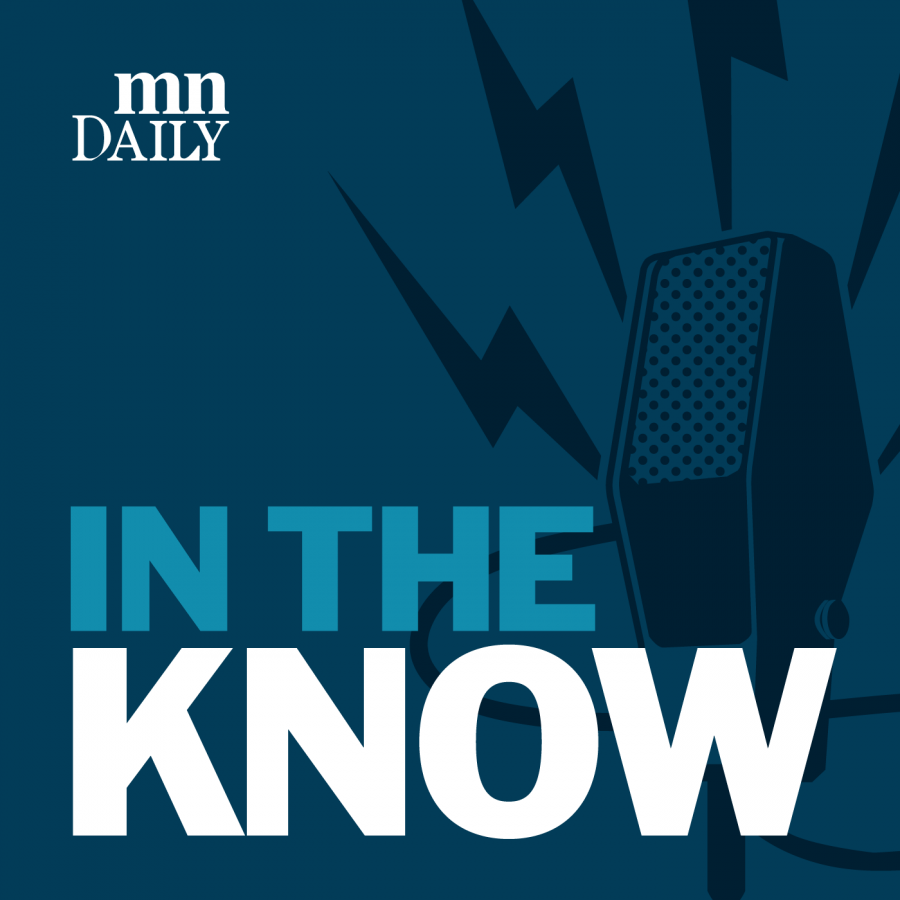INTRO MUSIC
ALBERTO GOMEZ: Hi, everyone. My name is Alberto Gomez and you’re listening to In The Know, a podcast by the Minnesota Daily. Together, we’ll be exploring the University of Minnesota’s students and communities with each episode.
On Thursday June 23, 13 high school students from across Minnesota gathered in the Weisman Art Museum to join the now 24 year-old WAM Teen Architecture Workshop. Over the course of five weeks, these students will learn the fundamentals of architectural planning, hand modeling, architecture as an art form, and career paths in architecture and design.
The workshop aims to serve as a fun introduction to a field that Jaimee Yung, the Director of Education at the Weisman, believes youth need more exposure to.
JAIMEE YUNG: We look to any students who, first of all, don’t have access to this type of programming maybe in their schools. So, a lot of schools don’t offer that there might not be enough budgeting to have classes like this.
GOMEZ: After a two year gap in programming, Yung is more than excited for the return of the Architecture Workshop. To Yung, the workshop serves as a way to serve local communities and provide a rare learning opportunity to youth.
YUNG: And so thinking about our role in the city, as far as architecture and then our connection to the university and the college of design, and thinking about what, how can we bridge the community with the university by utilizing our bright, shiny building.
GOMEZ: Through exposure to working professionals from around the Twin Cities and mentorship from U of M School of Design students, Yung hopes that high school students will find a niche that they can fit into.
YUNG: So we bring in consultants from different areas of architecture and design to talk with the students. So we might bring in an interior designer, a landscape, we’ll bring in a structural engineer, we’ll bring in a designer so they can kind of see that there’s not one path, that there’s many ways that they could be involved with architecture and design.
GOMEZ: Every Thursday for five weeks, groups of four to five high schoolers are led by a student-mentor from the U of M School of Design who has already progressed in multiple architectural design courses. With their mentor, the high school students explore campus, ask questions about their mentor’s college experiences, and are guided through multiple hands-on-activities.
Eight years ago, Angelo Davalos walked around the University as a mentee of the Weisman’s Teen Architecture Workshop; he now finds himself leading a group of students through multiple workshops and around the campus. Had COVID-19 not taken away two years of programming, this would have been Davalos’ fifth year as a mentor.
ANGELO DAVALOS: The nice thing about this camp is every year, the project changes and is something different, um, which I really enjoyed. And it is also led by people like myself, mentors or college students,who can really connect and try and teach things to these high school students that they have recently learned themselves.
GOMEZ: According to Davalos, not much has changed since he was a student mentee with the workshop. Prior to the pandemic, the workshop ran for five days over the course of a single week. But with the program now being spread out to one day a week for five weeks, Davalos and other mentors are more easily able to dedicate themselves to the program.
According to Davalos, by using School of Design students as mentors, the workshop creates an opportunity for college students to show mastery of their knowledge and act as a mentor for younger students considering college.
Davalos explains that he sees the Workshop as a pre-pre-architecture program, and he hopes that his efforts will leave his mentees with a leg up if they eventually find themselves in architecture school. But even then…
DAVALOS: One thing I’ll say about this program specifically is I learned more about architecture in this five day camp than I did probably in my first year of architecture school. It teaches you really direct and applicable knowledge.
GOMEZ: Every year, students are presented with a different type of project to plan out, build a scale model for, and present to professional architects from the Twin Cities. According to Yung, past projects have ranged from bridges, inventive stairwells, and campus cafes.
According to Sage Caballero, an educational assistant at the Weisman, this year students will be working on an event pop-up structure over the five weeks.
SAGE CABALLERO: So I’m thinking about the Wiseman and collaborating with other groups, a lot of times, you know, in the real world will have events or, um, art popup is kind of the best way to think of it, cause they’re all so different and can vary so much that happen outside of the museum. And so kind of thinking about what is the best way to, for the students in terms of architecture, how do we make it look like the Wiseman in the sense that it has our branding and our sort of quirky building that we have attached, um, without just kind of mimicking the building itself.
GOMEZ: Caballero explains that the project will task students with creating an easy to put up and transportable structure that harkens back to Frank Gehry’s design of the Weisman itself, while still maintaining its own identity.
Each day of the workshop is dedicated to different phases of the project. According to Yung, day one focused on introductions, team building, and the revelation of the five-week project.
The second workshop focuses on selecting a location for the students’ pop-up while also getting to explore the University alongside their mentor. Over the next three weeks, students are slowly introduced to different terminology, architecture practices, and real-world-professionals. According to Caballeros, the workshop functions as an introduction to the world of architecture and design. No prior knowledge of the field is required for students to join the workshop.
CABALLERO: And a lot of them don’t necessarily know the intricacies of what architecture is; there’s so many different types of it. And so letting them see what that is and letting them kind of dig in, most of them obviously have an interest in architecture, but this allows them to go into college, knowing a bit more and knowing kind of being able to see what paths they could go down.
GOMEZ: The Weisman Teen Architecture Workshop doesn’t come free or without some difficulties. Enrollment is open to any 10th-12th grade student for a $200 fee. But to make costs easier, the Weisman works with local architect firms to offer scholarship opportunities waiving a portion of the fee.
YUNG: We work with donors to get the funding for that, but really thinking about, again, it’s about the access and helping under-served students. So we don’t want the cost to be a barrier.
GOMEZ: Yung estimates that about half of all students request program scholarships. And year after year, the Weisman has tried to make the workshop more affordable.
YUNG: We’d like to get to a point in our funding model where we can provide it for free for all students, so that’s the goal.
GOMEZ: Pre-pandemic, the workshop would host anywhere between 30 to 45 high school students. With half the usual students this year, Yung believes that the smaller groups will allow for closer relationships amongst students and mentors, while still creating a fun energy.
YUNG: I love when the room gets really loud and messy, um, cuz the students are interacting and talking and sharing ideas and you see them, um, sort of arguing or, or having disagreements and then having to figure that out like this person has this idea, but this person has this idea and then they have to try to figure out like, how are we gonna make this work?
GOMEZ: After having worked closely with the Weisman Teen Architecture Workshop, Davalos hopes to not only see it thrive, but expand beyond just the 13 to 45 students who can make it to the Weisman. And already, Yung has begun playing with the idea of expanding the workshop students as young as middle school.
DAVALOS: I really think that this is a staple to be used in many other places cuz it really teaches these students so much in such a condensed amount of time. Teaching them, you know, collaboration, huge part of architecture, but even the, the process of design and, the technical aspects as well as the conceptual, portions. So that’s why I’ve kept coming back is it has meant so much to me that this program stays alive. It really helps these students to figure out what architecture is and if they truly are interested in it or not.
GOMEZ: The Daily would like to thank all of our listeners for tuning in. We’ll see you next time. And don’t forget to like and rate In The Know wherever you enjoy your podcasts. My name is Alberto Gomez and this is In The Know.



